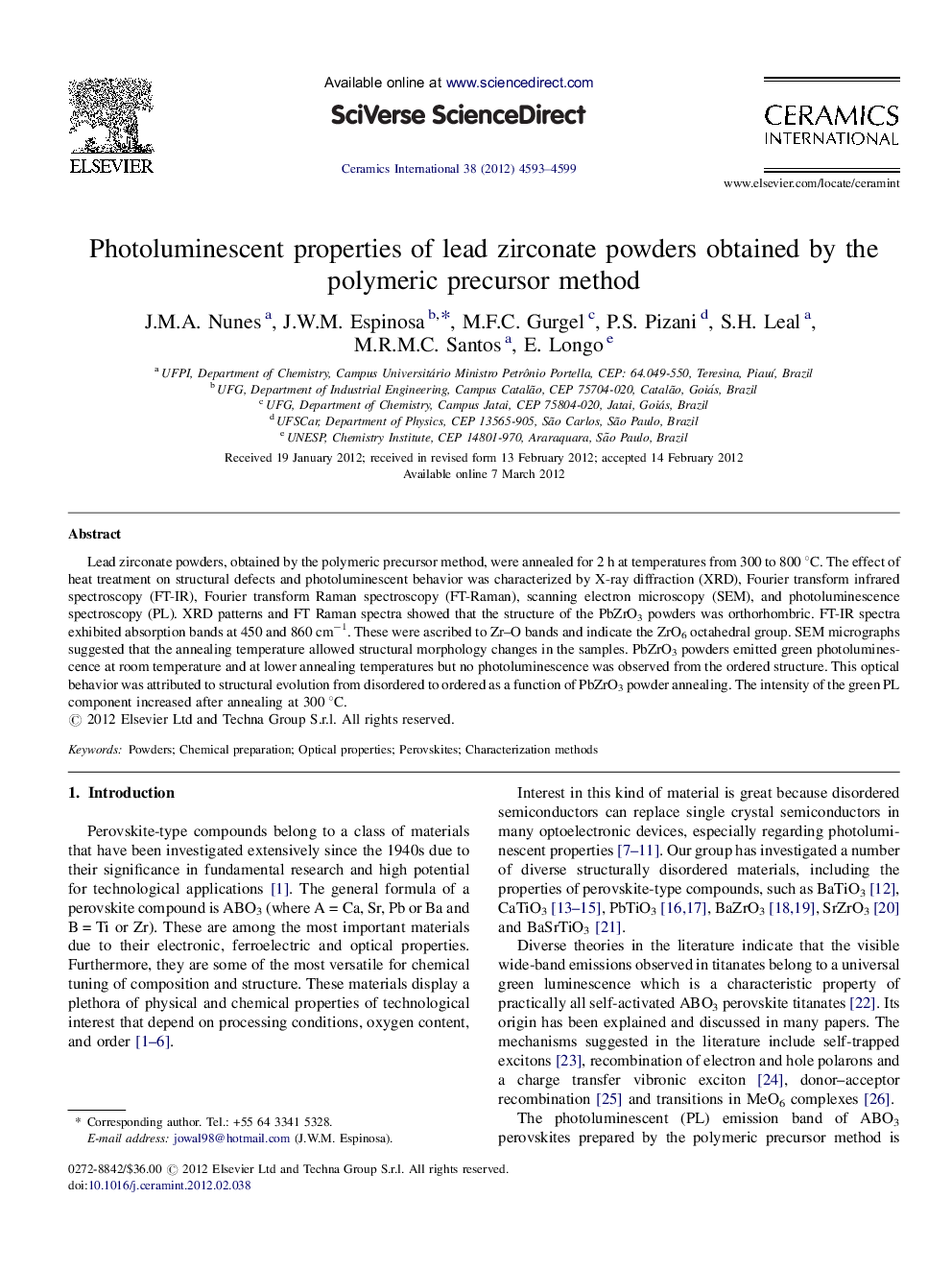| Article ID | Journal | Published Year | Pages | File Type |
|---|---|---|---|---|
| 1463722 | Ceramics International | 2012 | 7 Pages |
Lead zirconate powders, obtained by the polymeric precursor method, were annealed for 2 h at temperatures from 300 to 800 °C. The effect of heat treatment on structural defects and photoluminescent behavior was characterized by X-ray diffraction (XRD), Fourier transform infrared spectroscopy (FT-IR), Fourier transform Raman spectroscopy (FT-Raman), scanning electron microscopy (SEM), and photoluminescence spectroscopy (PL). XRD patterns and FT Raman spectra showed that the structure of the PbZrO3 powders was orthorhombric. FT-IR spectra exhibited absorption bands at 450 and 860 cm−1. These were ascribed to ZrO bands and indicate the ZrO6 octahedral group. SEM micrographs suggested that the annealing temperature allowed structural morphology changes in the samples. PbZrO3 powders emitted green photoluminescence at room temperature and at lower annealing temperatures but no photoluminescence was observed from the ordered structure. This optical behavior was attributed to structural evolution from disordered to ordered as a function of PbZrO3 powder annealing. The intensity of the green PL component increased after annealing at 300 °C.
